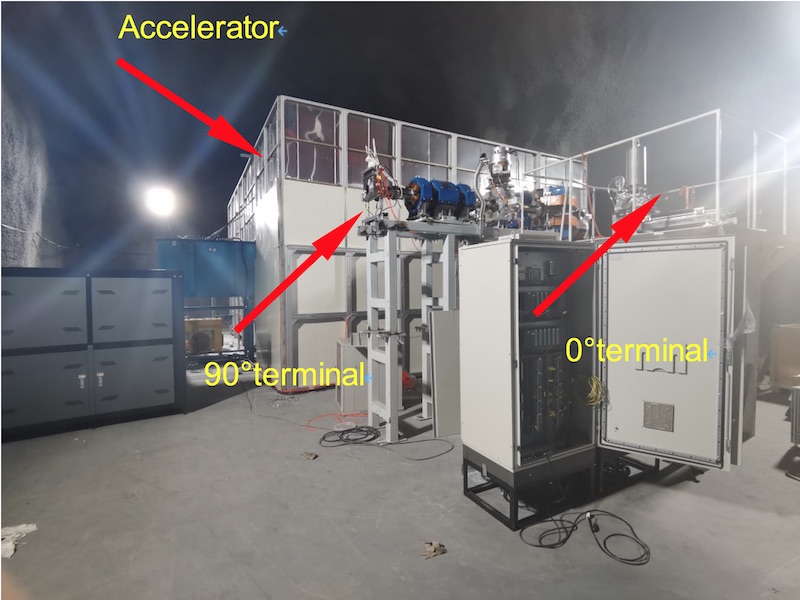The centerpiece of the JUNA project is an accelerator capable of delivering a 10mA H and He beams at 50-800 keV. The combination of high current and a deep underground location maximizes the signal/background ratio, enabling measurements at low energy where counting rates are severely suppressed by Coulomb barriers. Ideally nuclear reactions important to astrophysics should be measured in the Gamow peak, the window of energies relevant to nucleosynthesis in stars. Although reactions can in principle be measured at higher energies and extrapolated to threshold, the theoretical uncertainties associated with such extrapolations can be both large and difficult to quantify.
JUNA has the potential to be a world-leading facility. JUNA’s current will exceed by about an order of magnitude that available with the present 400 kV LUNA accelerator. JUNA’s accelerator is developed and tested above ground. The collaboration finished to move the accelerator underground in Oct. 2020. The coordination with Jinping laboratory development is potentially quite attractive, as hall developments can continue over the next year while development and testing finished by 1st quarter of 2021. In Dec. 26, 2020, JUNA accelerator delivered proton beam with intensity of 2.1 mA with beam energy of 270 keV. Underground experiments started from Dec. 27 and the commissioning of JUNA NSFC program scheduled in the end of 2021.
JUNA team followed the CJPL management to support this plan, providing required space, services (cooling/power, etc.) and safety rules. The collaboration is working in parallel on other important tasks, including the measurement and continued monitoring of backgrounds within CJPL, developing detector and laboratory shielding designs (with particular attention to mitigating neutrons induced by the accelerator), developing an array of gamma ray, and neutron detectors, and developing a target design capable of dissipating the power from a 10 mA beam.
